Before Farming, Writing, Or The Wheel, Humans Began Perfecting The Skyscraper
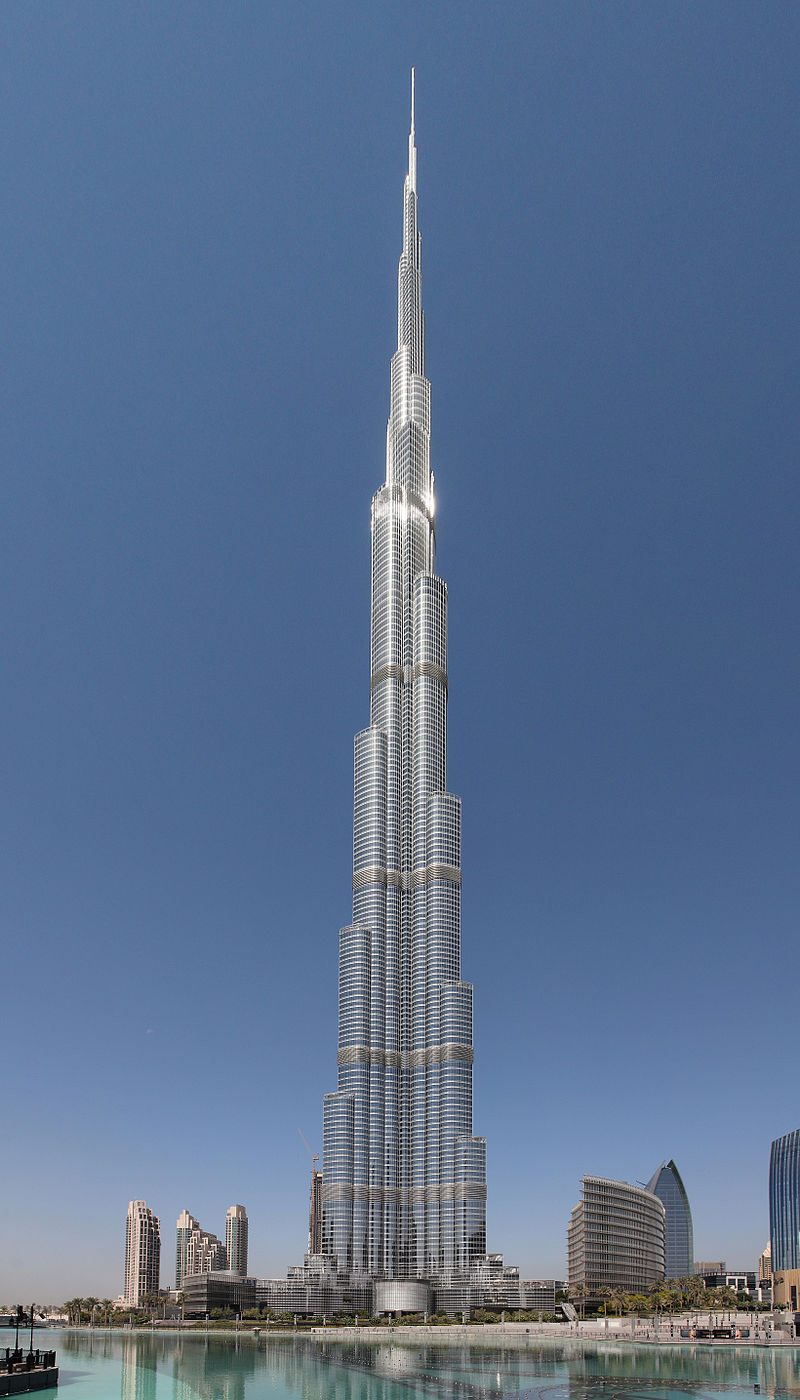
Burj Khalifa in Dubai, currently the world’s tallest building by 70 feet. (Photo: Donaldytong/WikiCommon CC BY-SA 3.0)
Between now and 2018, if all goes according to plan, New York City will be home to 33 new skyscrapers. Builders will soon unveil the MoMA tower, a supertall sliver of glass right next to the museum, and 432 Park Ave, which will be the tallest residential building in the hemisphere.
Elsewhere in the country, cities from San Francisco to Philadelphia are going tall—residents of Washington, D.C. are even calling for a repeal of the Height of Buildings Act, a century-old piece of legislation that constrains new structures to about 12 stories. Globally, newly powerful cities like Dubai and Taipei have taken to announcing their arrival on the scene with megatall triumphs, while the old guard works hard to keep up (as of this spring, London has 270 skyscrapers in the works).

Such heights may be unprecedented, but the concept of the skyscraper is surprisingly ancient. Twelve thousand years ago, before people had invented pottery, farming, writing, or the wheel—before anyone had even thought to settle down from a life of nomadic wandering—a group of 500 or so hunter-gatherers living in what is now southeastern Turkey got together, limbered up, and did something brand new: built a tall structure. They carved huge chunks of stone out of nearby quarries, carried them up a hill, stacked them into tall T-shapes, and arranged them in a series of circles around pairs of even taller pillars. They filled out the circles with walls and stone benches, and filled many of the surfaces with elaborately carved animals—stately birds, bandy-legged scorpions, toothy lions, crouching boars. Some of the central pillars were inscribed with arms, hands, and clothing, as though meant to represent larger-than-life human figures.
Since it began to be unearthed in 1995, the site, named Göbekli Tepe, has captured the imaginations of archaeologists worldwide. Its carved animals imply “a highly complicated mythology,” and the tall, T-shaped humanoids “clearly belong to another, transcendent sphere,” site archaeologists wrote in 2012. Not only that, but scattered within the circles were “incredibly large numbers of animal bones,” Jens Notroff, a member of the excavation team, wrote in an email. “The bones we found stem from the most meaty parts of the animals, and are cut and broken,” he wrote, and “their number hints at huge feasts.” Adjacent rectangular rooms, added centuries later, were used for cooking, and maybe even to brew beer. In contrast, there were no signs that anyone lived there full-time. Göbekli Tepe was only for feasting, dancing, and symbolic appreciation—it was a monument.
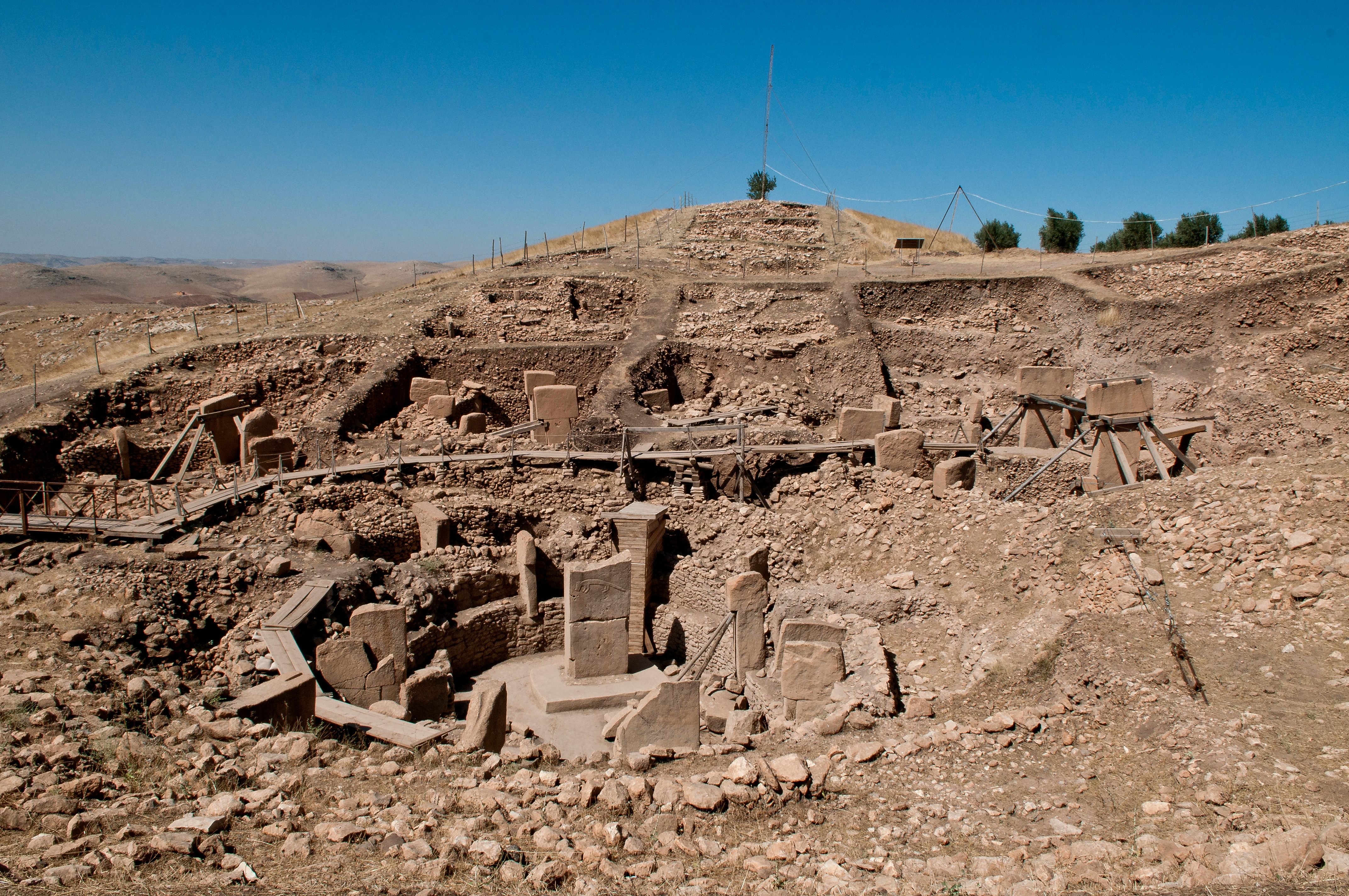
The ruins of Göbekli Tepe, its tall pillars and circular design still visible. (Photo: Teomancimit/WikiCommons CC BY 3.0)
For a long time, experts assumed that agriculture predated things like symbolic systems and organized religion. As Elif Batuman wrote in The New Yorker in 2011, “The findings at Göbekli Tepe suggest that we have the story backward—that it was actually the need to build a sacred site that first obliged hunter-gatherers to organize themselves as a workforce, to spend long periods of time in one place, to secure a stable food supply.”
“Intellectually, [the people who built Göbekli Tepe] were not different from us,” Notroff says. “They were as curious and eager and capable as we are today.” In fact, they were about to become even more similar—“they were adapting to a changing world,” Notroff says, living through a transitional period that would leave their descendants leading settled lives of farming and husbandry. When faced with these changes, they didn’t get straight to work, or put stylus to tablet. They put big rocks on top of each other. They built.
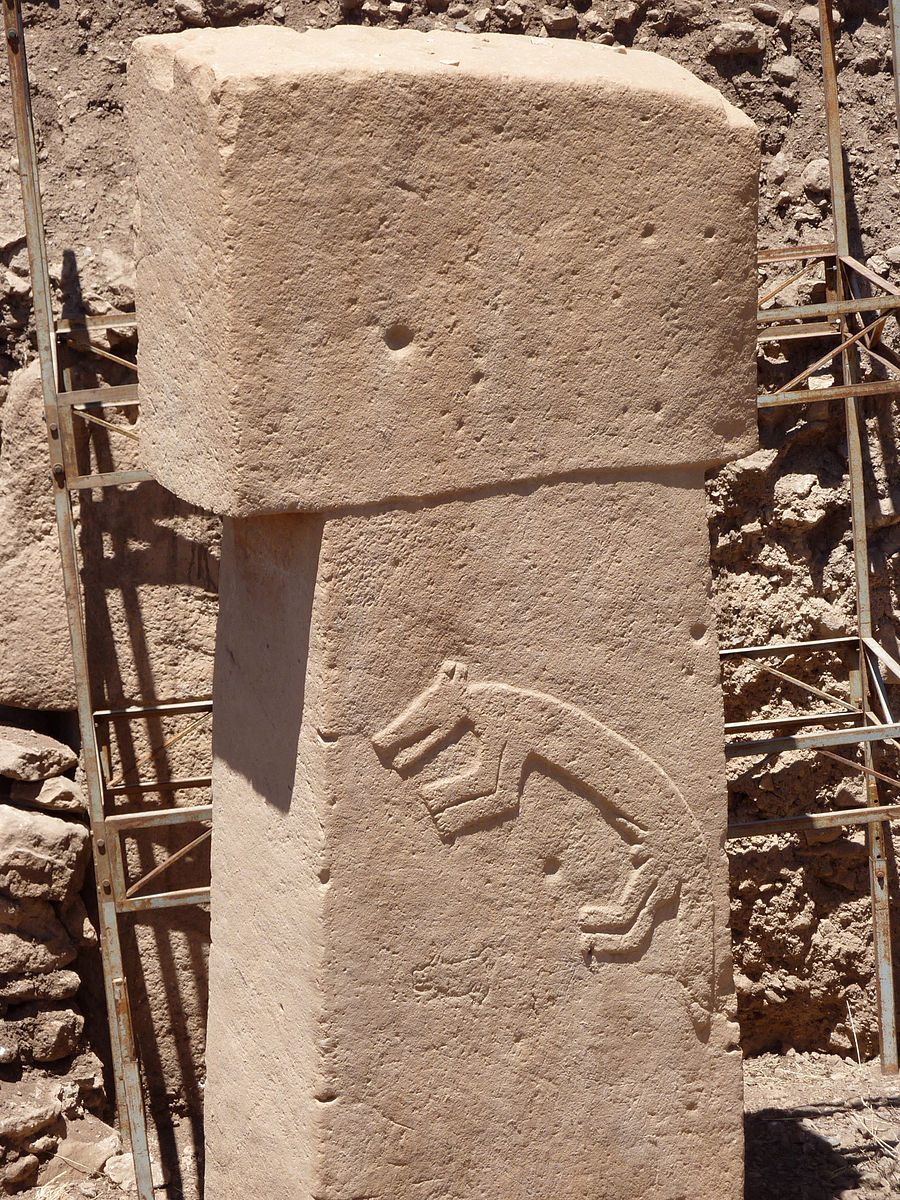
A leaping fox carved into a Göbekli Tepe pillar. (Photo: Zhengan/WikiCommons CC BY-SA 4.0)
In the millennia since, many other civilizations have marshaled massive amounts of resources to build structures that are big for the sake of being big. Stonehenge was built and refined over thousands of years. The Aztecs built their pyramids over a 200-year period, enlarging them to mark political, military, and religious events. The ancient Egyptian architect Imhotep, whose pyramid design allowed the entombed to climb to heaven, was so important to his countrymen that he was later deified, and the Romans invented the dome in order to create larger structures.
These days, it doesn’t take us quite as long to stack stones on top of stones. We tend to venerate old religious monuments over new ones, and even the powerful have relatively human-sized tombs most of the time. Over the past century and a half, we have channeled our large-scale building instincts into a very different kind of monument—the urban skyscraper.
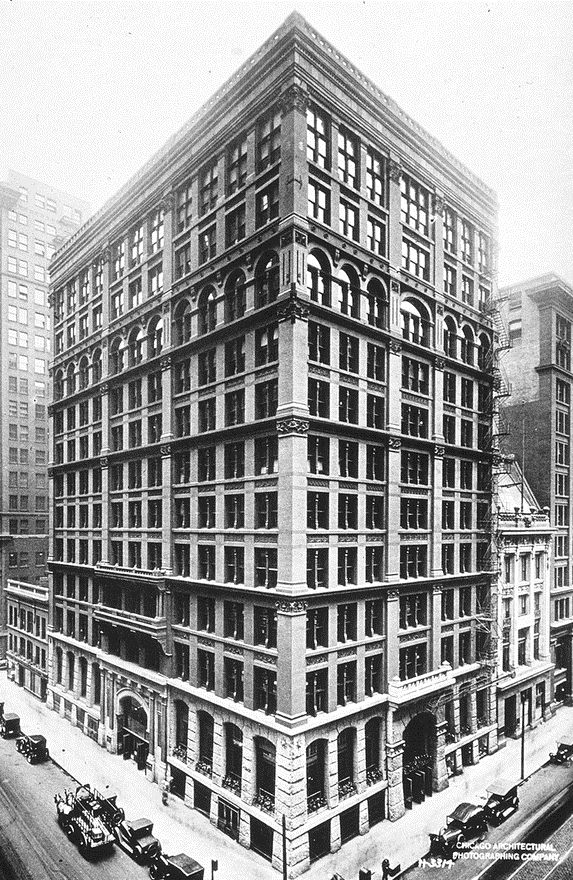
Chicago’s Home Insurance Building, now considered the first official skyscraper. (Photo: Chicago Architectural Photographing Company/Public Domain)
“The skyscraper was born out of fire,” says Kriston Capps, an architecture writer at CityLab. On October 8th, 1871, someone in Chicago knocked over a lantern, and three square miles of the city went up in flames. Hundreds of people died, and 17,500 buildings were destroyed. In the following weeks, Frederick Law Olmstead blamed the scope of the catastrophe on the city’s “weakness for big things” and “great showy buildings.” Meanwhile, the Chicago Tribune promised, in tall caps, “CHICAGO WILL RISE AGAIN.”
It did, to an unprecedented degree. When the Chicago blaze leveled the city, it “made it not just possible, but necessary, that they rethink and replan—and they did it vertically,” Capps explains. The first official skyscraper, the Home Insurance Building, was finished 14 years after the fire, in 1885. It was only five stories tall, but it represented “a soaring leap,” Capps says. The new steel and iron framework, developed for its fire resistance, also enabled unprecedented height, and by 1888, people were calling these stretched-out buildings “skyscrapers,” a word previously reserved for exceptionally high-altitude horses, hats, and birds.
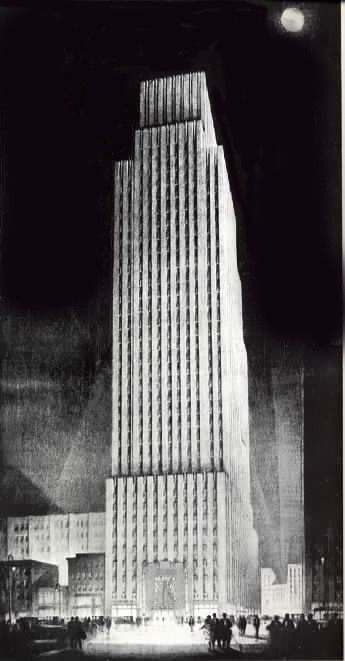
Hugh Ferriss’ 1930 drawing of the New York Daily News building. (Image: Hugh Ferriss/Public Domain)
A decade later, in “The Tall Office Building Artistically Considered,” architectural father of modernism Louis H. Sullivan asked, “What is the chief characteristic of the tall office building?” and then answered his own question: “It is lofty … it must be every inch a proud and soaring thing, rising in sheer exultation.” In “The Skyscraper As Symbolic Form” in 1982, Stuart Cohen recounted architects’ various arguments over how exactly to achieve this, from A.W. Pugin’s veneration of Gothic styles (with their “vertical line[s] illustrative of the great mystery of the Resurrection”) to Hugh Ferriss’ Romantic designs, which imitated mountain peaks. He ended with a diagnosis of “the skyscrapers of corporate America”—“no more and no less than an abstract expression of their verticality.”
This brings us back to the current lofty skyscraper boom, which Capps says is fueled by “the incredible wealth being generated and accumulated by a very elite sector of society.” In New York especially, with its new trend of skinny buildings topped by individual penthouses, skyscrapers are “bastions of privilege”—he compares them to the Egyptian pyramids, themselves less a symbol of togetherness than of sheer elite power. “They’re awesome, many of them are beautiful,” Capps says of the new buildings. But when he looks at them, he sees not just pure, untrammeled verticality, but “incredible income inequality.” This elitism is familiar: some archaeologists have suggested that even Göbekli Tepe was built at the behest of a caste of elite priests.

The Singapore skyline, circa 2009. (Photo: Merlion444/WikiCommons Public Domain)
Some time after it was built, the monument enclosures at Göbekli Tepe were backfilled into oblivion—piled high with gravel, tools, and animal bones, the very things that had been used to construct it and to celebrate within it. No one knows why the site was buried, but whoever filled it did so “in a hurry,” experts say.
The recent skyscraper boom is, practically speaking, a response to fiscal and residential growth. But with all the extra spires and parapets—enough that the Council on Tall Buildings and Urban Habitat recently revised their method of judging height—there’s no denying that skyscrapers have retained a pronounced symbolic aspect. At a recent panel at MIT, Annalee Newitz of io9 spoke of the rise of urbanization—as of 2014, for the first time in history, more than half of the world lives in cities. Such a shift, she argued, could be considered on par with the switch from nomadism to settled life, one jarring enough that we don’t just need tall buildings to house us, we want them in order to feel connected to our culture. As the ground shifts under that culture, it remains to be seen whether our monuments will shift, too.



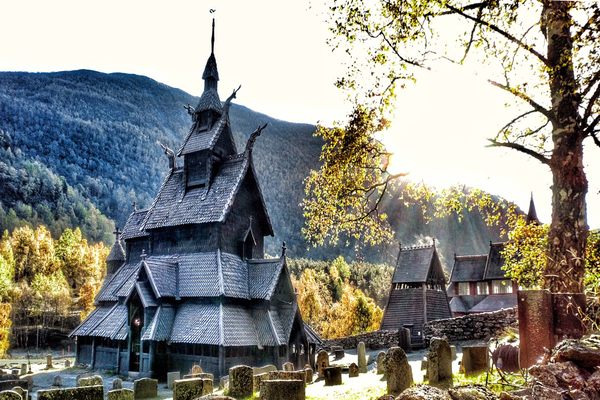






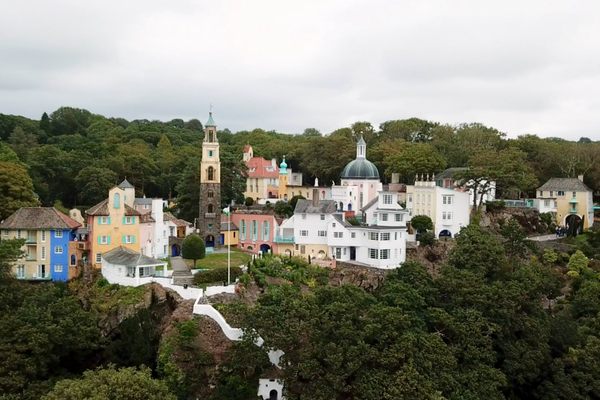

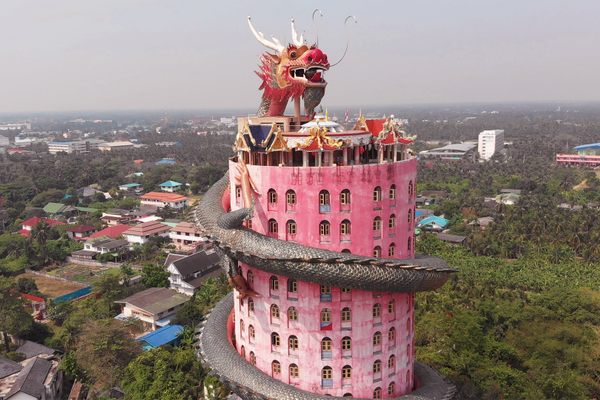

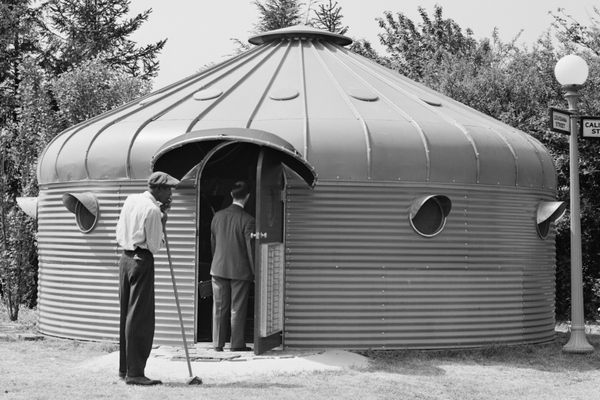

Follow us on Twitter to get the latest on the world's hidden wonders.
Like us on Facebook to get the latest on the world's hidden wonders.
Follow us on Twitter Like us on Facebook